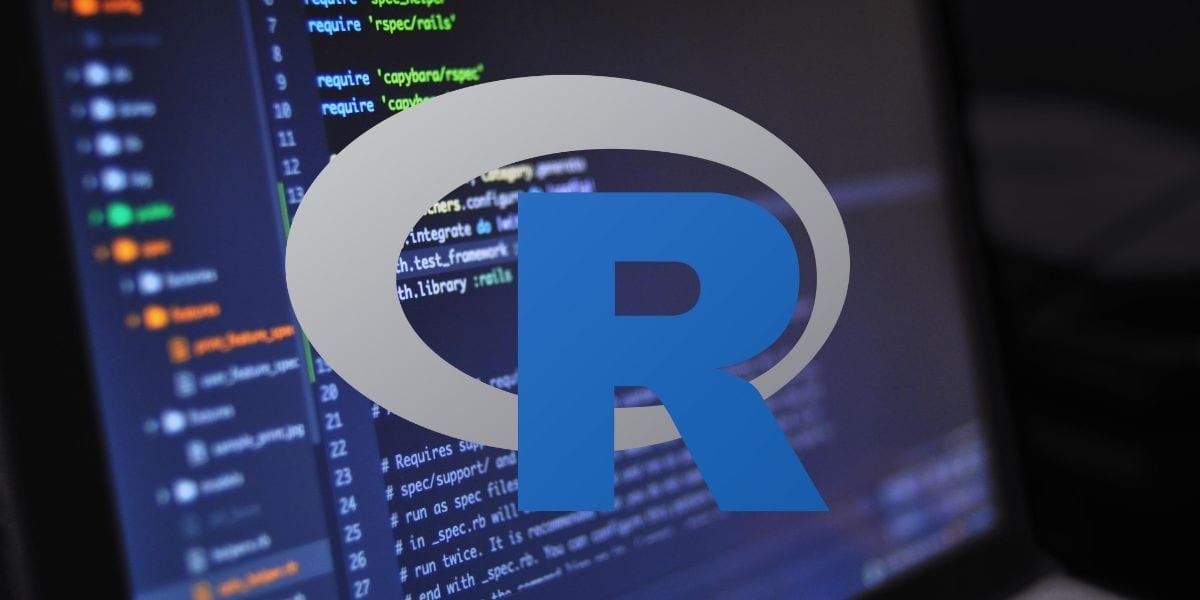In today’s data-driven world, one language that has gained immense popularity amongst data analysts and statisticians is the R programming language. It’s a comprehensive toolkit for statistical analysis and data visualization.
In this blog, we will take a deep dive into the R programming language and its features for data analysis. We will also explore how to use R for performing statistical tests, creating visualizations, and building machine learning models.
Additionally, we will discuss how R compares to Python for data analysis and Google’s contribution to the development of the language. Lastly, we will take a look at some of the most common libraries used in R programming and why it’s essential to learn this language to excel in the field of data science.
Overview of R Programming Language
With its wide-ranging applications in data science, machine learning, and statistical analysis, the R Programming Language has become an essential tool for programmers worldwide. An open-source programming language with a vast package library for data manipulation, visualization, and modeling- R provides significant customization options to users. Although it has a steep learning curve, its robust statistical capabilities make it highly favored by researchers, academics and statisticians alike. From regression analysis to clustering algorithms to machine learning models to time-series analysis- R can handle it all with ease. The integrated development environment RStudio makes coding in R easier with features like auto-completion of code snippets from the installed packages. So if you’re looking to dive into the world of data analytics or statistical testing- get started with R!
Data Analysis with R
R programming language offers a comprehensive toolkit for statistical analysis, making it popular among researchers, academics, and statisticians. The language provides a wide range of functions for data manipulation, visualization, regression models, clustering, classification algorithms, and statistical tests. It also has an integrated development environment (IDE) called RStudio to facilitate code development with R packages like dplyr and tidyr. Furthermore, R’s open-source nature makes it accessible to all regardless of budget or resources, unlike some other paid software options like Microsoft Excel or SQL. The language is versatile enough to perform basic tasks such as graph plotting or raw data examination but also advanced functions like time-series analysis and machine learning modeling.
How is R Programming Language used for Data Analysis?
R Programming Language is extensively used for data analysis and statistical modeling. It can clean, transform, and manipulate data from multiple sources. R offers diverse statistical techniques for exploring and visualizing data and allows creating custom functions and packages as per the analysis requirements. This language is widely applicable in finance, healthcare, marketing research, etc.
Features of R Programming Language for Data Analysis
R Programming Language for Data Analysis is not just an open-source language used by statisticians and data scientists worldwide but also handles large datasets efficiently, making it ideal for significant data analysis. With its vast library of statistical functions and packages, users can manipulate, clean, and transform data from various sources. R provides graphical and statistical techniques to explore and visualize data better than any other programming language. Users can create custom functions and packages specific to their analysis needs using R’s integrated development environment, RStudio. The open-source software allows integration with other programming languages such as Python or SQL. The powerful toolset includes regression, clustering, classification, time-series analysis, and much more, making R Programming Language a must-know for those interested in the field of Data Analytics.
RStudio for R Programming Language
RStudio is an integrated development environment (IDE) that provides a user-friendly interface for statistical computing with the R programming language. It allows users to write and debug R code effortlessly while providing essential tools such as data visualization and project management. With RStudio, users can collaborate on projects while managing large datasets and complex computations efficiently. Its extensive library of open-source software packages like dplyr and tidyr helps in data wrangling, data manipulation, and transformation of raw data into structured data frames for analysis. Additionally, it seamlessly integrates with other programming languages like Python and SQL for classification, clustering, regression analysis, time-series analysis, machine learning algorithms, or statistical tests. If you are interested in pursuing business analytics or data science courses at beginner or expert levels offered by universities like the University of Auckland or online platforms like Coursera, RStudio’s privacy policy ensures secure handling of sensitive information.
What is RStudio and why is it important for R programming?
RStudio is a user-friendly IDE that streamlines R programming. It offers code completion, debugging tools, and data visualization capabilities, making it easier to collaborate and share projects. Using RStudio can improve productivity and efficiency in statistical analysis with the R language.
Comparison of R Programming Language with Python
When considering the differences between programming languages for data analysis, it’s worth looking at R Programming Language in comparison to Python. It’s important to remember that R is tailored towards statistical computing and graphics whereas Python serves as a multipurpose language for various applications.
Although both languages have their strengths and weaknesses, one advantage of using R over Python is its extensive list of specialized packages for data science such as dplyr, tidyr and ggplot2. In contrast, Python offers superior capabilities with regards to machine learning and big data processing through libraries such as sklearn and pandas respectively. Ultimately, choosing which language to use depends on individual needs and preferences, whether you’re an experienced statistician or a beginner starting out in data analytics.
Which language is better for data analysis?
When it comes to data analysis, R is tailored for statistics while Python is more versatile. R has extensive built-in statistical functions, whereas Python requires additional libraries for certain analyses. Python has a larger user community and better support for machine learning applications. The choice between the two depends on individual needs and preferences.
Google’s Contribution to R Programming Language
Google’s contribution to R programming language extends beyond just statistical analysis and into the realm of machine learning and big data. With the development of packages such as Tensorflow and BigQueryR, Google has significantly improved the accessibility of these tools within R programming language, enabling statisticians and data scientists to handle massive datasets with ease. Additionally, the integration with Google Cloud Platform makes it possible to access cloud services seamlessly from within R, further enhancing its capabilities.
As a result of these contributions, R programming language has become an essential tool in many industries that require sophisticated data analysis techniques.
How has Google contributed to the development of R programming?
Google has played a significant role in advancing R programming, offering open-source development opportunities and producing compatible tools and libraries like TensorFlow for machine learning. Additionally, the Google Cloud Platform provides scalable computing environments, while BigQuery enables SQL queries on large datasets.
These contributions have helped make R more adaptable and powerful for statistical analysis.
Documentation for R Programming Language
The comprehensive toolkit of the R programming language makes it a top choice for statisticians and data scientists alike. With its vast array of functions for manipulating, transforming and visualizing data sets; it’s no wonder that this open-source software is widely used in the field of data analysis. In addition to providing easy-to-understand documentation online and user groups for collaborative learning purposes; the R package system extends the functionality of the interface with extra features tailored specifically towards different analytical tasks.
The ease-of-use inherent in this powerful platform has made it one of the most popular tools in modern-day data science courses. With support for statistical techniques such as regression and clustering; this software has become a go-to tool for statisticians everywhere. Moreover; its integrated development environment (IDE), RStudio offers a flexible workspace where you can manipulate your datasets freely.
Where to find the best documentation for R programming?
You can find extensive documentation for R programming online. The official R website and RStudio offer resources for beginners and advanced users. Online communities like Stack Overflow and GitHub can provide specific answers. Books and courses give in-depth knowledge and practical applications of the language.
Most Common R Libraries for Data Analysis
R programming language is extensively utilized in the domain of data science and analytics due to its vast array of libraries that act as a comprehensive toolkit for statistical computing and graphics. Among these libraries are ggplot2 that helps create graphs and generate visualizations; dplyr which allows the user to manipulate and transform data effectively; tidyr which assists in sorting out disorganized datasets; caret which provides support for classification and regression tasks; lubridate which enables ease of access while working on dates/times; stringr which facilitates working with text strings by cleaning the dataset or extracting pertinent information from it; purrr which offers assistance when performing intricate functions on lists. These libraries are just some of the must-know elements that enable efficient data analysis using R programming language.
Which libraries are a must-know for data analysis using R programming?
Efficient data analysis in R programming requires knowledge of important libraries like dplyr for manipulation, ggplot2 for visualization, tidyr for cleaning messy data, and lubridate for working with dates. Understanding these tools can improve the accuracy and speed of data analysis.
Applications of R Programming Language in Data Science
Statisticians and data scientists use the r programming language to perform an array of statistical computing tasks such as regression analysis,time-series analysis,and clustering. With its powerful graphics and visualization capabilities,R is also an ideal tool for creating high-quality graphicsand plots that helps in better understanding the dataset. The IDE,RStudio provides a user-friendly interface for writing and running R code while extending its capabilities through packages that offer various functions’ collections.
R programming’s versatile nature makes it widely applicable in different fields like finance sector including healthcare sector,social media analytics,business analytics,and marketing research. Due to its flexibility,it can handle large datasets efficiently making it ideal for big data analysis.
What are the industries that use R programming for data analysis?
R programming language is utilized in various industries, including finance for tasks like risk management and financial forecasting. Healthcare professionals use R to analyze clinical trial data and develop predictive models for disease diagnosis. Marketers use it to analyze customer data and predict behavior. Other industries like retail, insurance, and government agencies also use R for data analysis purposes.
Why Learn R Programming Language for Data Analysis
If you are looking to enter the field of data analysis or want to become a data scientist, then learning the R programming language for data analysis is highly recommended.
This open-source programming language has a massive collection of packages that cater to statistical computing, graphics, visualization as well as machine learning, and big data analysis. Not only can you perform regression and clustering analyses with ease using R programming language but it also offers an integrated development environment (IDE) like RStudio for a seamless coding experience.
The popularity of R programming language among statisticians and data scientists is due to its flexibility, efficiency in handling large datasets and its diverse range of applications across various industries such as healthcare, finance and marketing. Consider enrolling in beginner-friendly online courses or attending workshops to get started with this powerful tool.
10 Data Analysis Tools to Transform Your Business in 2023
Conclusion
In conclusion, R programming language is a powerful toolkit for statistical analysis. From data analysis to machine learning and artificial intelligence, R programming has become an indispensable tool for data scientists worldwide.
With its vast library of tools, it is the go-to language for statistical computing and data visualization. Moreover, it provides an open-source platform that is highly customizable, making it easier to integrate with other programming languages.
If you are looking to become a data scientist or enhance your skills in data analysis, then learning R programming language is a must.



